Peat moss septic systems offer an eco-friendly alternative to traditional septic systems, utilizing peat moss as the primary filtration component. These systems are designed to treat and dispose of household wastewater in a safe and efficient manner, while reducing the environmental impact. The underlying principle of a peat moss septic system is the use of natural materials to encourage the breakdown of waste and promote the growth of beneficial bacteria.
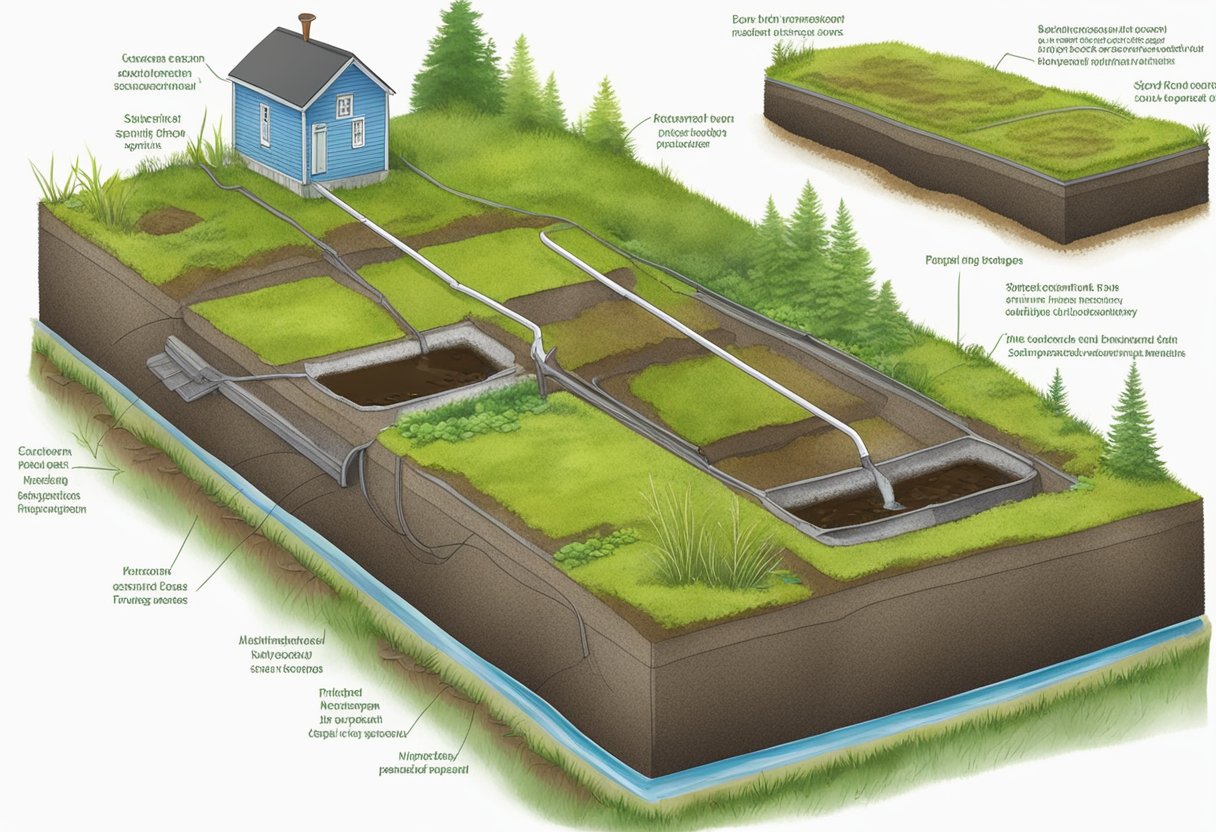
The peat moss septic system is composed of layers of peat moss, which act as a natural filter to remove harmful contaminants and suspend solids from the wastewater. As the water passes through the peat moss, microorganisms within the peat break down the waste, converting harmful substances into more environmentally friendly byproducts. In addition to the filtration process, the peat moss also provides a suitable environment for aerobic bacteria to thrive, further enhancing the treatment of wastewater.
Although peat moss septic systems have gained popularity due to their eco-friendly nature, prospective users must carefully consider factors such as the site conditions, regular maintenance, and potential long-term costs. These concerns are key when deciding whether a peat moss septic system is the right choice for a particular property.
Understanding Peat Moss Septic Systems
Peat moss septic systems are an alternative sewage system technology that utilizes the natural properties of peat moss to treat household wastewater. These systems offer an eco-friendly and efficient method for managing wastewater in areas where conventional septic systems are not viable. They are especially suitable for rural homes and properties with limited space or challenging soil conditions.
The peat moss septic system consists of a septic tank, a peat moss filter bed, and an infiltration area for the treated effluent. Wastewater from the household first enters the septic tank, where solid waste settles to the bottom, and scum rises to the top. The clarified effluent then flows into the peat moss filter bed, where the peat moss acts as a natural filter, removing contaminants and pathogens from the liquid.
Peat moss has unique properties that make it well-suited for treating wastewater, including a high cation exchange capacity which allows it to absorb nutrients and a fibrous structure which provides an ideal environment for beneficial microbes. These microbes break down and digest waste materials, further purifying the effluent. Peat moss also has a natural acidic pH, which can help inhibit the growth of harmful bacteria in the wastewater.
After passing through the peat moss filter bed, the treated effluent is discharged into an infiltration area or leach field, where it can safely percolate into the ground without contaminating the surrounding environment. Peat moss septic systems offer several advantages over traditional septic systems:
- Environmentally friendly: By utilizing a natural material like peat moss, these systems have a lower environmental impact compared to traditional systems that rely on energy-intensive treatment methods.
- Efficient: Peat moss septic systems can effectively remove more than 90% of total suspended solids, biochemical oxygen demand, and fecal coliform bacteria from wastewater, producing a high-quality effluent.
- Site flexibility: Peat moss septic systems can be installed in areas with limited space, poor soils, or high groundwater tables, making them a practical solution for many rural properties.
As with any alternative sewage system, peat moss septic systems require proper design, installation, and maintenance to ensure optimal performance and longevity. Regular monitoring and periodic replacement of the peat moss filter bed are necessary to maintain the system’s effectiveness.
Components and Functioning
Peat Filter
A peat filter is an essential component of a peat moss septic system. It consists of peat filter media, typically made from sphagnum peat moss, which is a natural, renewable material. The peat filter acts as a biological filter, removing harmful pathogens and contaminants from the septic tank effluent. In this process, the effluent flows through the peat filter media, where beneficial microorganisms break down pollutants, effectively treating the water before it enters the drainage system.
Septic Tank
The septic tank is a vital part of the peat moss septic system, responsible for separating solids from wastewater. As wastewater enters the tank, the heavier solids settle at the bottom, forming a layer of sludge. Lighter solids, such as oil and grease, rise to the surface, creating a layer of scum. The liquid in between the sludge and scum layers is the septic tank effluent, which then flows out of the tank and into the peat filter.
Effluent Dosing System
The effluent dosing system plays an important role in managing effluent levels in the peat moss septic system. It ensures that the proper amount of effluent is evenly distributed over the peat filter. This controlled distribution helps maintain consistent effluent levels, preventing overloading of the peat filter and ensuring that the system functions effectively. The system may consist of pumps, control panels, and timers, which work together to provide optimal dosing.
Drainage System
The final component of the peat moss septic system is the drainage system, which conveys the treated effluent away from the peat filter and into a drain field or stone bed. The drain field is typically constructed using perforated pipes laid in gravel trenches, allowing treated effluent to slowly disperse into the surrounding soil. A stone bed works similarly, with perforated pipes placed in a layer of crushed stone or gravel, providing even distribution and absorption of the treated effluent. Proper functioning of the drainage system is crucial for preventing surface ponding and ensuring the system remains environmentally friendly.
Comparison With Traditional Systems
Peat moss septic systems are an environmentally friendly alternative to traditional septic systems. In this section, we will compare peat moss septic systems with conventional septic systems, discussing their differences and advantages.
Traditional septic systems rely on a septic tank and a drain field to manage wastewater. The tank separates solids from liquids, and the liquids flow into the drain field, where they are absorbed into the soil. One disadvantage of these systems is that they require a large amount of space for the drain field and may not be suitable for small properties or those with limited space.
On the other hand, peat moss septic systems utilize a peat moss bed to filter and treat the wastewater. This method significantly reduces the amount of space required for the system, making it a practical solution for properties with limited space. Furthermore, peat moss is a natural, renewable resource, creating a more sustainable option than traditional systems.
When comparing the efficiency of the two types of systems, peat moss septic systems tend to have higher levels of filtration. This is due to the ability of peat moss to absorb pollutants like bacteria, viruses, and chemicals. Consequently, the treated wastewater leaving a peat moss system tends to be cleaner and safer for the environment.
Maintenance for both systems also differs. Conventional septic systems require periodic pumping out of the septic tank to remove accumulated solids, usually every 3-5 years. Peat moss systems also need periodic maintenance, but this typically involves removing and replacing the peat moss bed every 7-15 years, depending on the system and usage. This longer maintenance interval can be beneficial for homeowners.
Cost can be a significant factor in choosing a septic system. Traditional systems can have a lower initial installation cost. However, the long-term costs of maintaining a peat moss system might be lower due to extended maintenance intervals, while also offering the benefit of a reduced environmental impact.
In summary, peat moss septic systems provide a more environmentally friendly alternative to traditional septic systems. While their initial cost may be higher, the long-term advantages, such as better filtration, reduced space requirements, and extended maintenance intervals, make them an appealing option for property owners seeking an environmentally conscious wastewater treatment solution.
Installation and Maintenance
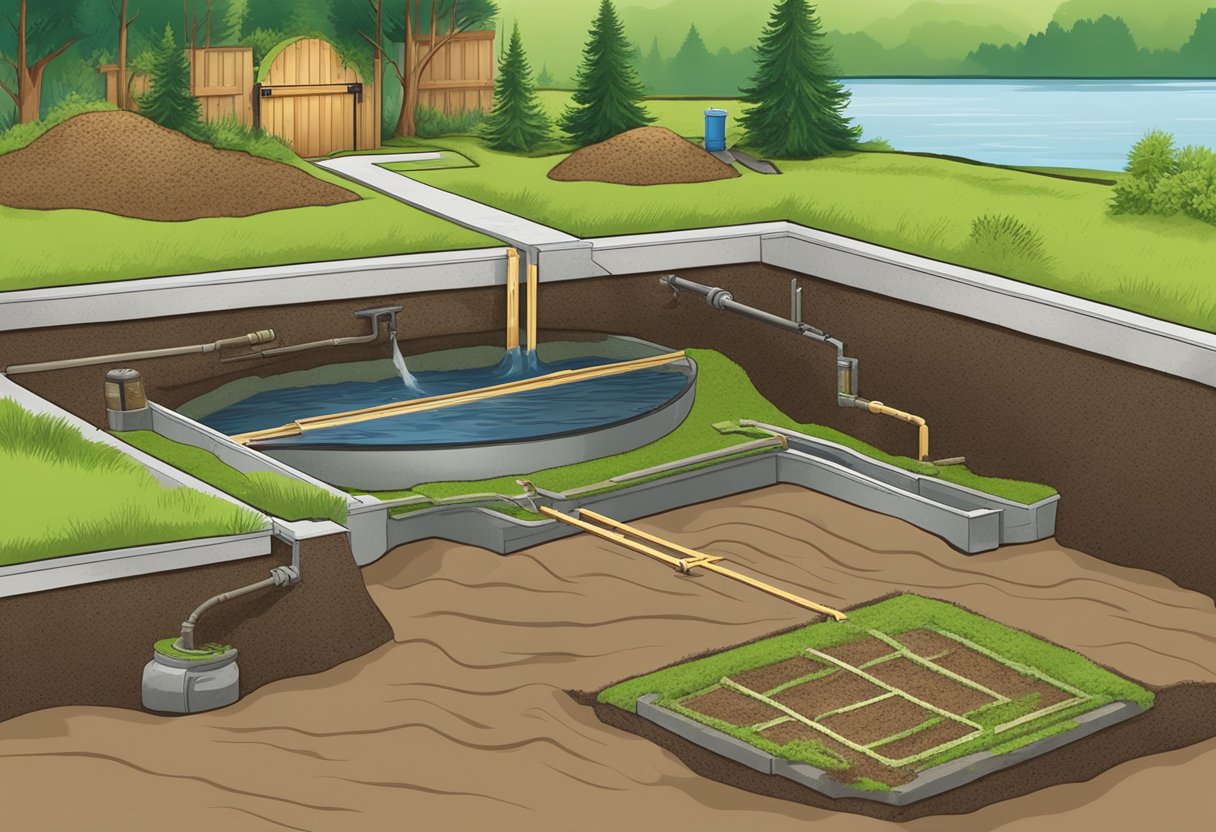
Installing a peat moss septic system involves placing a layer of peat moss in a suitable containment structure to serve as a natural filter for household wastewater. First, the containment structure is placed in an appropriate location, with proper site preparation, including excavation and grading. After the peat moss layer is installed, it acts as a biofiltration layer, where microorganisms break down the pollutants present in the wastewater.
Regular maintenance is crucial for ensuring optimal functioning and longevity of a peat moss septic system. It includes frequently inspecting the peat moss layer for wear and tear, as well as monitoring the moisture content to prevent it from becoming too dry or too wet. If the peat moss layer becomes compacted or damaged, it needs to be replaced.
Pumping is another essential aspect of maintaining a peat moss septic system. The septic system should be pumped regularly to remove the settled solids, which will prevent clogs and ensure optimal performance. The recommended pumping frequency will depend on factors such as system capacity, household size, and water usage patterns.
Frequent maintenance of a peat moss septic system not only guarantees its effective performance but also prolongs its life expectancy. By adhering to a maintenance schedule and addressing issues proactively, homeowners can ensure a consistently functioning system while avoiding costly repairs or replacements.
In conclusion, proper installation and adherence to a regular maintenance schedule are crucial factors in the successful operation of a peat moss septic system. With suitable care, these systems can provide an environmentally friendly and cost-effective wastewater treatment solution.
Environmental Impact and Sustainability
Peat moss septic systems are known for their environmentally friendly nature as they utilize a natural, renewable resource – peat moss. Peat moss acts as a natural filter, removing contaminants and absorbing nutrients, such as nitrogen, from wastewater.
One significant benefit of using peat moss in septic systems is its capacity for reducing the levels of harmful microorganisms. The peat moss helps to neutralize and break down these microorganisms, thus minimizing their impact on the environment. Additionally, the unique structure of peat moss provides a perfect environment for the growth of beneficial microorganisms that play key roles in breaking down organic matter and converting nutrients into less harmful forms.
In terms of sustainability, peat moss septic systems have a lower carbon footprint compared to traditional septic systems. Greenhouse gas emissions are considerably reduced as peat moss is a natural material, requiring significantly less energy and resources to produce when compared to concrete or plastic-based alternatives.
However, it is essential to consider the extraction of peat moss, which can have a negative impact on ecosystems and contribute to the release of carbon dioxide. Responsible sourcing and minimal disturbance of peat bogs are crucial in minimizing the environmental impact of peat moss extraction.
Overall, peat moss septic systems offer an environmentally friendly and sustainable option for wastewater treatment. By facilitating the breakdown of contaminants and microorganisms while minimizing the release of harmful substances, peat moss septic systems ultimately contribute to protecting valuable water resources and ensuring the well-being of natural ecosystems.
Practical Considerations
Cost Implications
When considering a peat moss septic system for a residential property, it is essential to evaluate the cost implications. One of the main advantages of a peat moss system is the potential for cost savings. This type of system is generally more affordable than traditional septic systems in terms of initial installation costs. Additionally, the simple design and lack of mechanical components can lead to reduced maintenance costs over time.
However, it is worth noting that peat moss itself can be a recurring expense. The peat moss must be replaced periodically, with replacement intervals ranging from 3 to 15 years, depending on usage and system design. Homeowners should factor in the cost of replacement peat moss when assessing the overall cost-efficiency of a peat moss septic system.
Homeowner Responsibilities
With a peat moss septic system in place, homeowners need to be aware of their responsibilities to ensure the proper functioning and longevity of the system. Regular inspection and timely maintenance are crucial for avoiding issues and costly repairs.
Monitoring water usage becomes an essential homeowner task with a peat moss septic system. Excessive water use can lead to the saturation of the peat moss, reducing its effectiveness as a filtration medium. Therefore, homeowners should strive to adopt water-conserving practices and fixtures to manage their water consumption. Installing low-flow toilets, faucets, and showerheads can help reduce overall water usage.
In conclusion, when considering a peat moss septic system, it is vital to understand the cost implications and homeowner responsibilities associated with its use. By carefully weighing the advantages and drawbacks, homeowners can make an informed decision that best suits their residential property needs.
Potential Challenges and Solutions
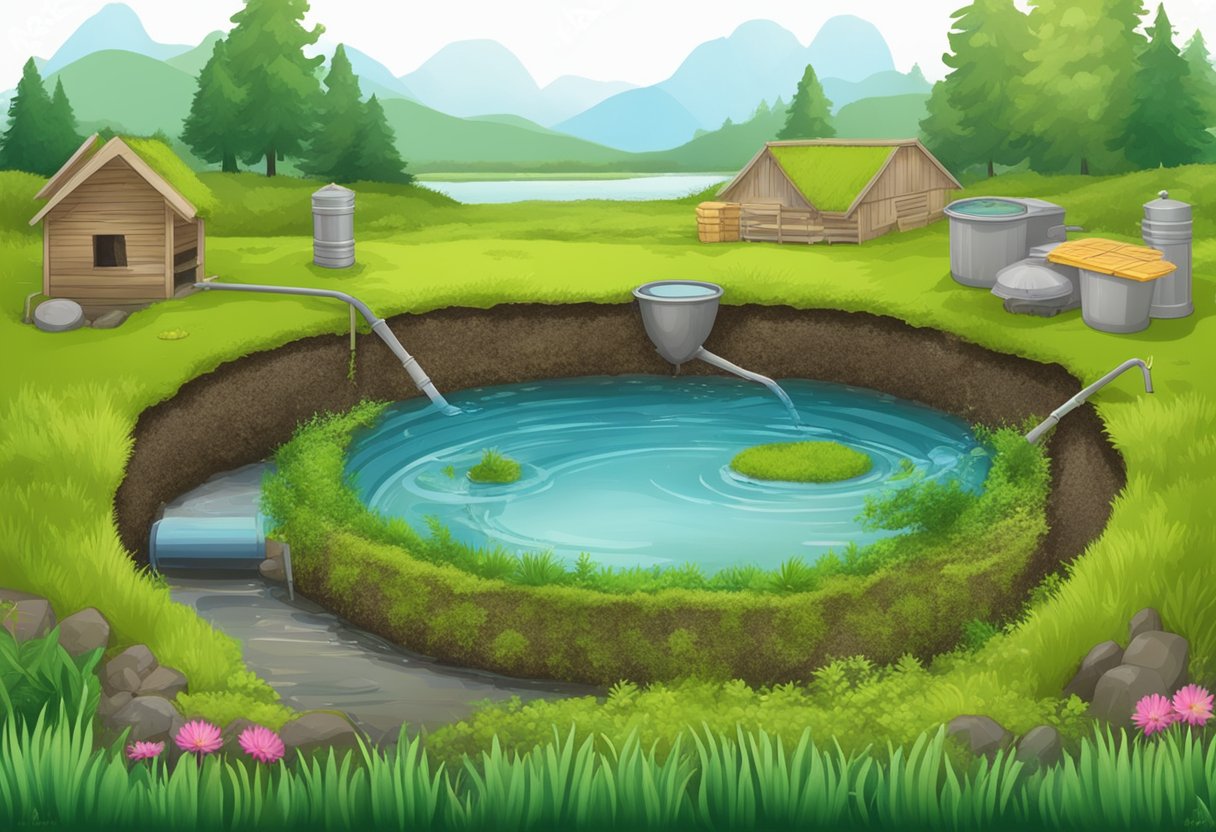
One of the challenges in using peat moss as a component of septic systems is the risk of clogging. Over time, the peat may become saturated with organic material, which can restrict the flow of effluent through the system. To address this issue, it is crucial to properly maintain and monitor the peat moss system. Regular inspections and cleaning can help prevent clogging and ensure that the flow of effluent remains consistent.
Another challenge associated with peat moss septic systems is the potential for flooding. Peat moss can absorb a considerable amount of water, but in areas prone to heavy rainfall or high groundwater levels, the system may become overwhelmed. An effective solution to mitigate the risk of flooding is to design the system with sufficient drainage capacity. Proper grading and a suitable system size can help prevent water from inundating the septic bed.
System failure is also a concern for all septic systems, including those utilizing peat moss. While peat moss systems can effectively process wastewater, various factors can lead to system failure, such as improper installation, lack of maintenance, or age-related degradation. Regular checkups and maintenance of the system, such as replacing the peat moss when necessary, can help to minimize the likelihood of failure. Additionally, employing experienced professionals to install and periodically evaluate the system is crucial to its long-term success.
In conclusion, proper monitoring, maintenance and well-thought-out design strategies can help mitigate the challenges of using a peat moss septic system, such as clogging, flooding, and system failure. Adhering to these solutions can contribute to the efficient and successful operation of a peat moss-based septic system.
Conclusion
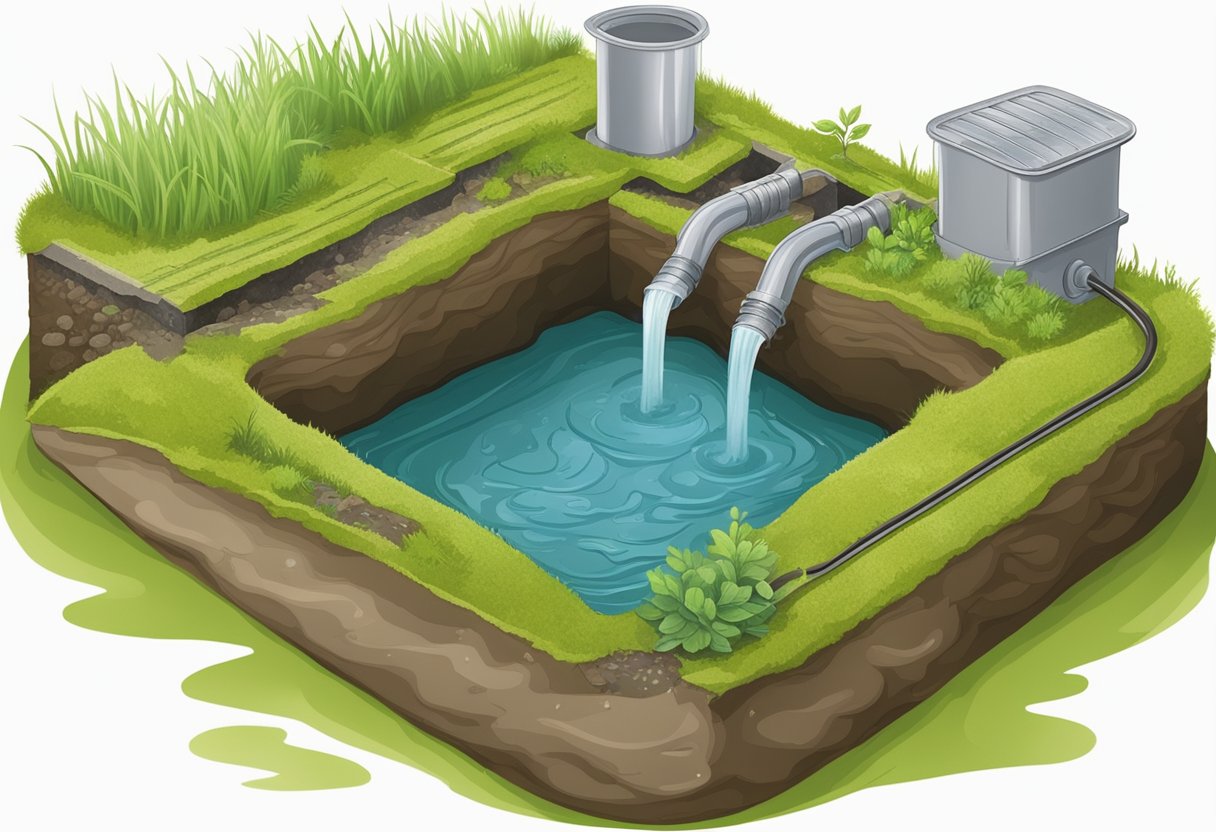
Peat moss septic systems offer an environmentally friendly and efficient option for wastewater treatment. Their ability to filter pollutants and retain water make them an attractive alternative to traditional septic systems. For property owners, they provide a cost-effective and low-maintenance choice.
These systems work well in rural areas and locations with high water tables or poor soil conditions, where conventional systems might struggle. The use of peat moss in septic systems helps to reduce the need for dangerous chemicals and energy-consuming methods, contributing to a greener solution for waste management.
In summary, peat moss septic systems are a sustainable and practical choice for wastewater treatment. They demonstrate promising potential for increased adoption in the future, bolstered by their efficiency, environmentally friendly nature, and ease of use.
Frequently Asked Questions
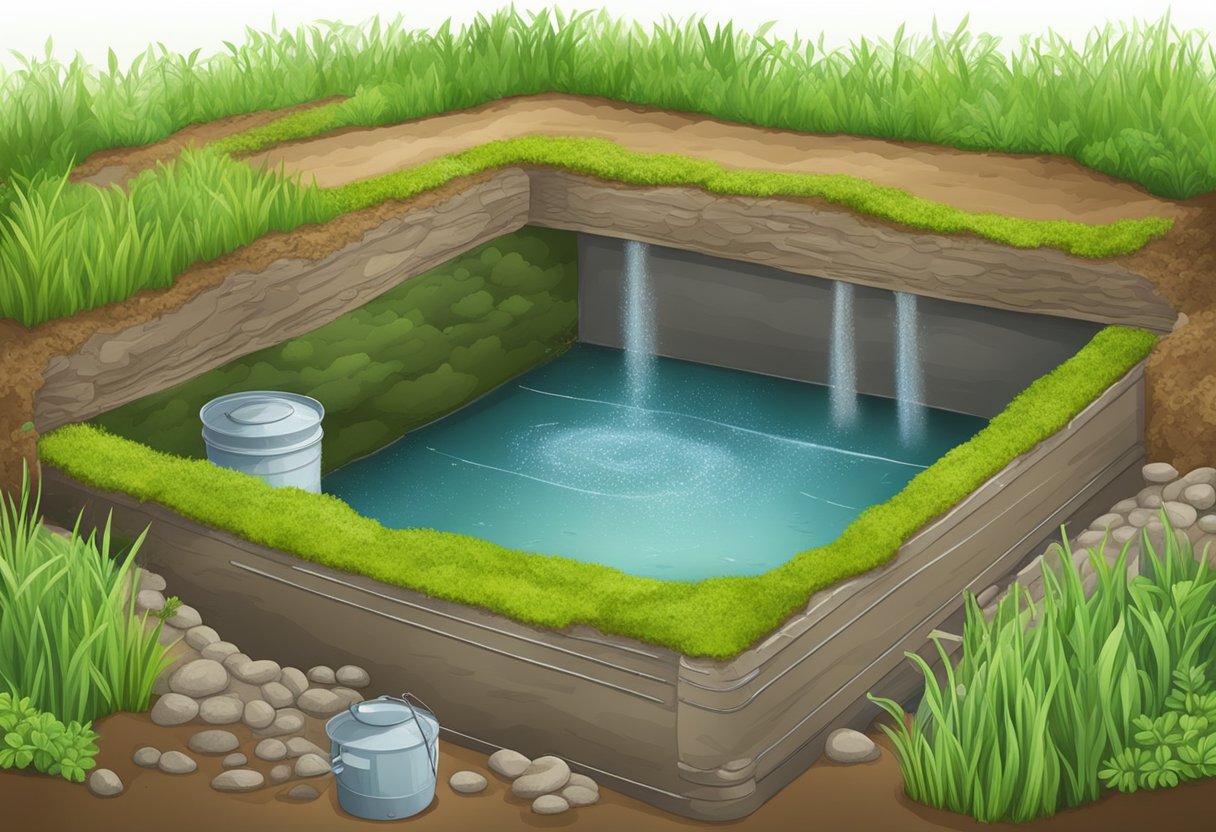
How does a peat moss septic system work?
A peat moss septic system works by utilizing the natural filtering properties of peat moss. Wastewater from the home is sent to a septic tank, where solids settle and are broken down by bacteria. The liquid effluent then flows into a peat moss bed, where it is absorbed and filtered. The peat moss effectively removes pathogens and nutrients from the wastewater before it percolates into the soil.
What is the maintenance process for a peat moss septic system?
Maintenance for a peat moss septic system involves regular inspections and removal of accumulated solids in the septic tank. Additionally, the peat moss bed should be checked for any signs of wear or decomposition every 2-3 years. If the peat moss has decomposed, it needs to be replaced with fresh peat moss to ensure effective filtration and system performance.
Where can I purchase peat moss for my septic system?
Peat moss for septic systems can be purchased at various home improvement stores, garden centers, and through specialized suppliers online. It is important to purchase high-quality peat moss designed for use in septic systems, as it has been processed and treated to provide optimal filtration performance.
What are the advantages and disadvantages of using peat moss in a septic system?
Advantages of using peat moss in a septic system include its natural filtering capabilities, environmentally friendly properties, and the fact that it is a renewable resource. Disadvantages include the need for regular maintenance and replacement of the peat moss, as well as a higher initial cost compared to traditional septic systems.
Are peat moss septic systems recommended for use in Ontario and Nova Scotia?
Peat moss septic systems are recommended for use in rural areas of Ontario and Nova Scotia, where traditional sewage systems may not be feasible or cost-effective. These systems have been successfully utilized in these regions, and their use is supported by local environmental agencies and government authorities.
How do I install a peat moss septic system?
Installation of a peat moss septic system should be done by a licensed and experienced professional. The process involves excavating a suitable site, installing the septic tank, constructing the peat moss bed, and connecting the plumbing system. It is crucial to follow local regulations and guidelines to ensure a properly functioning and compliant system.